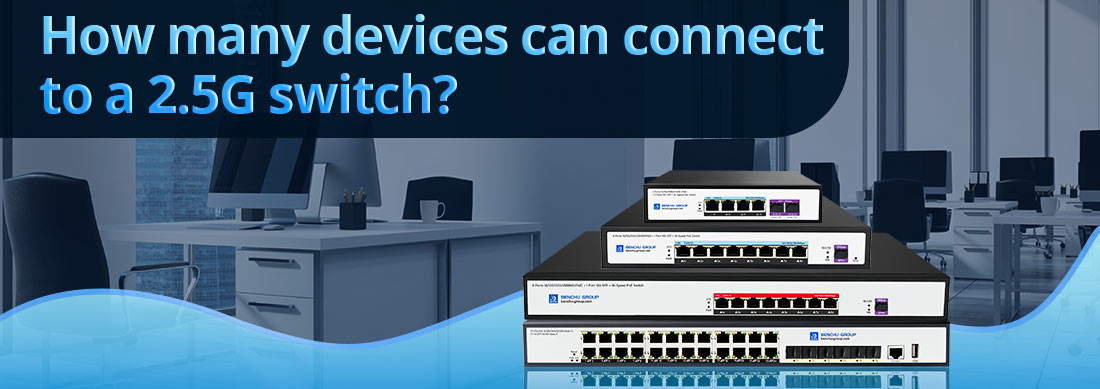
The number of devices that can connect to a 2.5G switch depends on several factors, including the number of ports available on the switch, the type of connections used (e.g., standard Ethernet vs. Power over Ethernet), and the overall network design and requirements. Here’s a detailed description of how these factors influence connectivity:
1. Port Count
Port Availability: The primary determinant of how many devices can connect to a 2.5G switch is the number of available ports. 2.5G switches come in various configurations, typically ranging from 5 to 48 ports. For example:
--- A 5-port 2.5G switch can connect 5 devices.
--- A 24-port 2.5G switch can connect 24 devices.
--- A 48-port 2.5G switch can connect 48 devices.
Stackable Options: Some 2.5G switches support stacking, which allows multiple switches to be interconnected and function as a single logical unit. In such cases, the total number of devices that can be connected can significantly increase, as you can add more switches to accommodate additional devices.
2. Device Type and Network Configuration
Types of Devices: The types of devices connected to the switch can also impact the overall number of devices supported. Devices may include:
--- Computers: PCs, laptops, and servers.
--- Networked Peripherals: Printers, IP cameras, and other devices.
--- Wireless Access Points: These can extend the network to additional wireless devices.
Network Segmentation: If your network is segmented (e.g., using VLANs), the number of devices per segment may be limited based on network configuration. Each VLAN can have its set of devices, but they all still connect through the same physical switch.
3. PoE Capabilities
Power over Ethernet (PoE): If the 2.5G switch supports PoE, it can power connected devices (like IP cameras, VoIP phones, or wireless access points) through the Ethernet cable. Each PoE-capable port can power a device, but the total number of powered devices must remain within the switch's overall power budget.
Power Budget Management: For instance, if a switch can provide a maximum of 370 W across its ports, and you are using 15.4 W per port for PoE, you could theoretically connect up to 24 devices (assuming all are powered simultaneously) to the switch, but this would leave no headroom for additional power requirements or efficiency losses.
4. Traffic Management and Load Balancing
Traffic Considerations: While a 2.5G switch may have many ports, the actual performance will also depend on the traffic load. Each device connected to the switch shares the available bandwidth. Therefore, in a scenario where multiple devices are heavily utilizing bandwidth (e.g., streaming, gaming, or transferring large files), performance might degrade if the traffic exceeds the switch's capacity.
Switch Capacity: A 2.5G switch can handle multiple gigabit connections, but if every device is trying to transmit large amounts of data simultaneously, the effective throughput per device may drop. Therefore, planning the network load and balancing traffic is essential for optimal performance.
5. Future Expansion and Scalability
Scalability: Many users choose to start with a switch that meets their current needs but plan for future expansion. As network demands grow (e.g., adding more devices, moving to higher-speed requirements), you may need to add additional 2.5G switches or upgrade to a larger model to accommodate the increase in devices.
Layer 3 Capabilities: Some 2.5G switches come with Layer 3 capabilities that allow for more sophisticated routing and management of devices across different network segments, which can facilitate connectivity for a larger number of devices while maintaining performance.
Conclusion
In conclusion, the number of devices that can connect to a 2.5G switch primarily depends on the number of ports on the switch, the types of devices being connected, and the overall network configuration. A standard 2.5G switch can connect anywhere from 5 to 48 devices directly, with additional scalability through stacking and PoE options.
When planning a network, it's essential to consider not just the maximum number of devices, but also the overall network load, traffic management, and future growth to ensure optimal performance and connectivity.